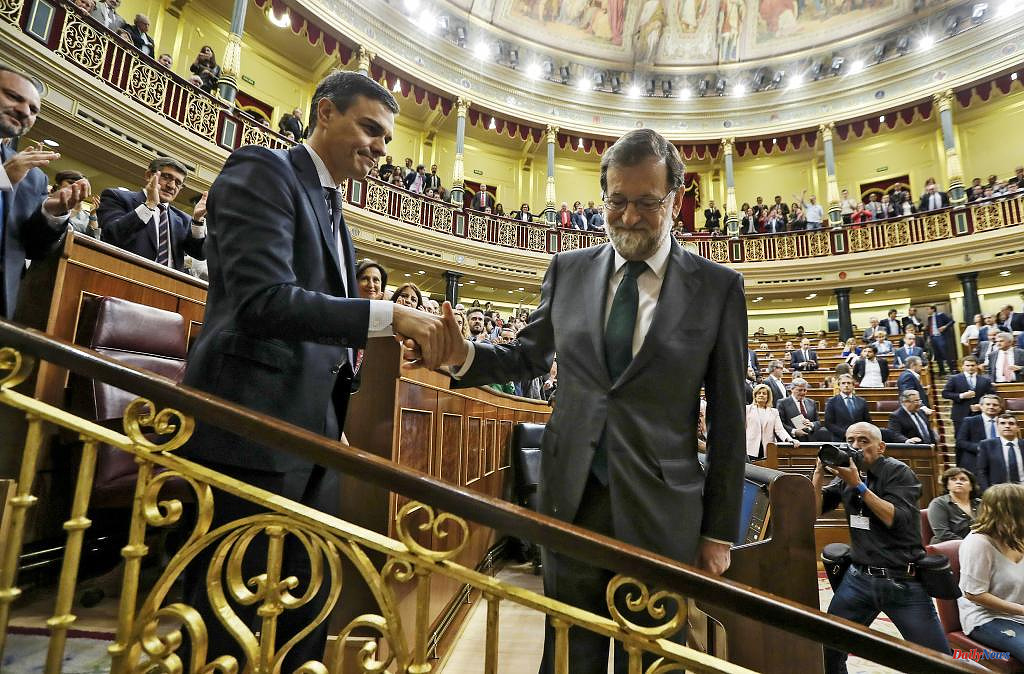The motion of censure is a procedure included in the Spanish Constitution and in the Regulations of the Congress of Deputies that can cause the fall of the government. It is an instrument available to the opposition in Parliament to highlight the break in the relationship of trust between the Government and the Lower House, demanding the ultimate political responsibility of the government.
The operation of this mechanism is explained in articles 113 and 114.2 of the Spanish Constitution and in articles 175 to 179 of the Regulations of the Congress of Deputies.
As established by law, the motion of censure must be proposed and registered by at least one tenth of the deputies, that is, by 35 of the 350 seats in Congress. One of the requirements for it to be processed is the presentation of a candidate for the Presidency of the Government, together with a reasoned letter addressed to the Table of Congress and a detailed program.
If all the conditions are met, the Congress Table will admit the motion for processing, informing the President of the Government and the spokespersons of all the parliamentary groups.
From that moment on, alternative motions may be submitted within a period of two days and, after five days from the presentation, the vote will take place, being necessary for the vote in favor of the absolute majority of the members of Congress to prosper. , that is, at least 176 seats.
In the event that Congress approves the motion of censure, the rest of the possible motions will not be voted on. Likewise, as contemplated in article 114.2 of the Constitution, the Government will submit its resignation to the King and the candidate of the motion will be invested with the confidence of the Chamber for the purposes provided in article 99 of the Constitution. The King will name him President of the Government.
On the contrary, if the motion of censure does not prosper, its signatories will not be able to present another during the same period of sessions. For a new one, another 35 deputies would be needed.
The debate on the motion in the plenary session of Congress opens with the defense of the motion by one of the signatories with unlimited time. After the first intervention, the proposed candidate can go up to the speaker's rostrum to explain, also without a time limit, the government's political program that he would lead if he were victorious
If there are no other alternative motions, each parliamentary group has the right to intervene with a limited time of 30 minutes and a subsequent turn of 10 minutes for reply or rectification.
The voting procedure for the motion of censure is the same as that used in investiture debates. If it manages to have an absolute majority of the members of Congress (176 votes in favour), the opposition overthrows the existing government and the proposed candidate is sworn in as president.
Since the approval of the 1978 Constitution, this procedure has been put into practice five times:
The sixth motion of no confidence is about to start. Vox will register the motion against Pedro Sánchez with Ramón Tamames as candidate in the Lower House on February 27. If you register that day, the vote in Congress could not take place before March 5. The defense speech will be given by Santiago Abascal and later Tamames will explain the program. The President of the Government is willing to go up to the rostrum. Everything indicates that the votes in favor will be far from the absolute majority.
According to the criteria of The Trust Project












